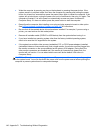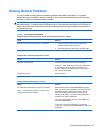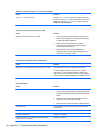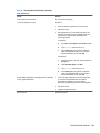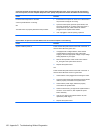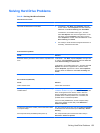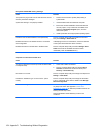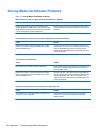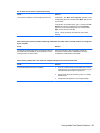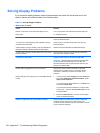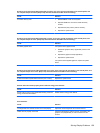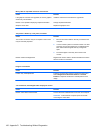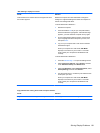
Nonsystem disk/NTLDR missing message.
Cause Solution
The system is trying to start from the hard drive but the hard
drive may have been damaged.
1. Perform Drive Protection System (DPS) testing in
system ROM.
System files missing or not properly installed. 1. Insert bootable media and restart the computer.
2. Boot to the windows installation media and select the
recovery option. If only a restore kit is available, then
select the File Backup Program option, and then
restore the system.
3. Install system files for the appropriate operating system.
Hard drive boot has been disabled in Computer Setup. Run the Computer Setup utility and enable the hard drive
entry in the Storage > Boot Order list.
Bootable hard drive is not attached as first in a multi-hard
drive configuration.
If attempting to boot from a hard drive, ensure it is attached
to the system board dark blue SATA connector.
Bootable hard drive is not listed first in the Boot Order. Run the Computer Setup utility and select Storage > Boot
Order and ensure the bootable hard drive is listed
immediately under the Hard Drive entry.
Computer will not boot from hard drive.
Cause Solution
The device is attached to a SATA port that has been hidden
in Computer Setup.
1. Check SATA cable connections.
2. Run the Computer Setup utility and ensure Device
Available is selected for the device's SATA port in
Security > Device Security.
Boot order is not correct. Run the Computer Setup utility and change boot sequence in
Storage > Boot Order.
Hard Drive's “Emulation Type” is set to “None.” (some
models)
Run the Computer Setup utility and change the “Emulation
Type” to “Hard Disk” in the device's details under Storage >
Device Configuration.
Hard drive is damaged. Observe if the front panel Power LED is blinking RED and if
any beeps are heard. See Appendix A,
POST Error
Messages on page 128 to determine possible causes for the
blinking red and beep codes.
See the Worldwide Limited Warranty for terms and
conditions.
154 Appendix D Troubleshooting Without Diagnostics



